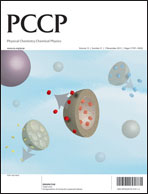Spin–orbit coupling and electron correlation at various coupled-cluster levels for closed-shell diatomic molecules
Abstract
In this work, equilibrium bond lengths and harmonic frequencies of some closed-shell diatomic heavy-element compounds are calculated at a series of coupled-cluster (CC) levels including CCS, CC2, CCSD and CCSD(T) with spin–orbit coupling (SOC) included in post-Hartree–Fock (HF) step. The purpose of this work is to demonstrate the performance of CC2 for heavy element compounds and to investigate the separability between SOC and electron correlation at different correlation levels. According to our calculations, CC2 results agree well with MP2 results for these molecules except for SnO, Sb2, PbO and Bi2 and the bond lengths of SnO and PbO with CC2 are overestimated by about 0.25 Å compared to when using other approaches. Furthermore, SOC effects on electron correlation are significant for Bi2 and At2 at CCSD(T) level, while this is the case only for Bi2 at CCSD level. For 5th-row element compounds, SOC effects on bond lengths and harmonic frequencies at different levels agree well with each other except for Sb2. On the other hand, SOC effects at CCSD level are in good agreement with those at CCSD(T) level for the investigated 6th-row element compounds except for At2, whereas SOC effects at low correlation levels will be different from those at CCSD(T) level to some extent.


 Please wait while we load your content...
Please wait while we load your content...